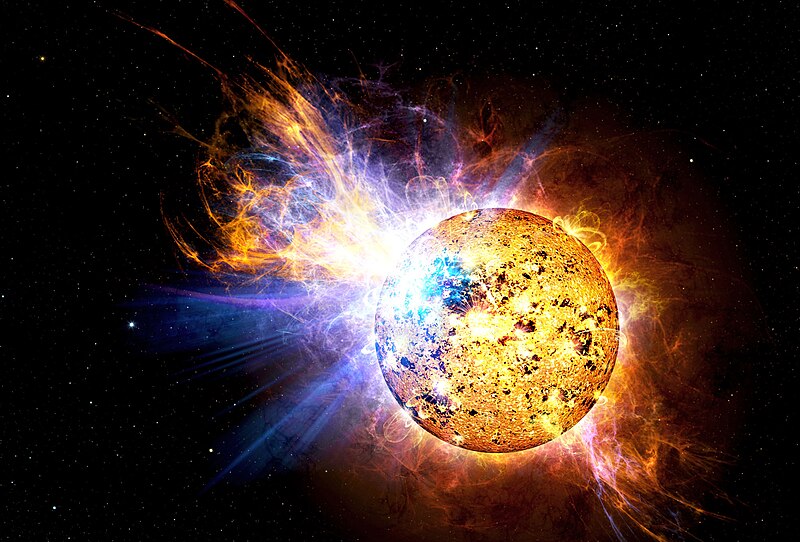Bestand:Nasa EV Lacertae 250408.jpg
Uiterlijk

Grootte van deze voorvertoning: 800 × 542 pixels. Andere resoluties: 320 × 217 pixels | 640 × 434 pixels | 1.024 × 694 pixels | 1.280 × 867 pixels | 2.000 × 1.355 pixels.
Oorspronkelijk bestand (2.000 × 1.355 pixels, bestandsgrootte: 485 kB, MIME-type: image/jpeg)
Bestandsgeschiedenis
Klik op een datum/tijd om het bestand te zien zoals het destijds was.
| Datum/tijd | Miniatuur | Afmetingen | Gebruiker | Opmerking | |
|---|---|---|---|---|---|
| huidige versie | 24 okt 2023 09:32 |  | 2.000 × 1.355 (485 kB) | Юрий Д.К. | original quality |
| 20 jun 2008 03:16 |  | 2.000 × 1.355 (301 kB) | Kimse | Full resolution | |
| 23 mei 2008 23:45 |  | 1.600 × 1.200 (253 kB) | Anetode | ||
| 21 mei 2008 16:13 |  | 946 × 710 (112 kB) | Fer31416 | {{Information |Description=Explosión de EV Lacertae |Source= NASA |Date= |Author= NASA |Permission= |other_versions= }} |
Bestandsgebruik
Dit bestand wordt op de volgende pagina gebruikt:
Globaal bestandsgebruik
De volgende andere wiki's gebruiken dit bestand:
- Gebruikt op ar.wikipedia.org
- Gebruikt op ast.wikipedia.org
- Gebruikt op bs.wikipedia.org
- Gebruikt op ca.wikipedia.org
- Gebruikt op de.wikipedia.org
- Gebruikt op en.wikipedia.org
- Gebruikt op es.wikipedia.org
- Lacerta
- Estrella fulgurante
- EV Lacertae
- Usuario:Jorghex
- Wikipedia:Candidatos a recursos destacados/Junio-2008
- Wikipedia:Candidatos a recursos destacados/Pipsqueak Star Unleashes Monster Flare.jpg
- Wikipedia:Recurso del día/julio de 2008
- Plantilla:RDD/186
- Wikipedia:Imágenes destacadas/Universo
- Wikipedia:Recurso del día/101 - 200
- Wikipedia:Recurso del día/abril de 2009
- Wikipedia:Recurso del día/junio de 2010
- Wikipedia:Recurso del día/diciembre de 2011
- Wikipedia:Recurso del día/diciembre de 2013
- Wikipedia:Recurso del día/junio de 2016
- Wikipedia:Recurso del día/septiembre de 2018
- Wikipedia:Recurso del día/enero de 2021
- Wikipedia:Recurso del día/diciembre de 2023
- Gebruikt op eu.wikipedia.org
- Gebruikt op ext.wikipedia.org
- Gebruikt op fa.wikipedia.org
- Gebruikt op fr.wikipedia.org
- Gebruikt op fr.wiktionary.org
- Gebruikt op it.wikipedia.org
Globaal gebruik van dit bestand bekijken.


